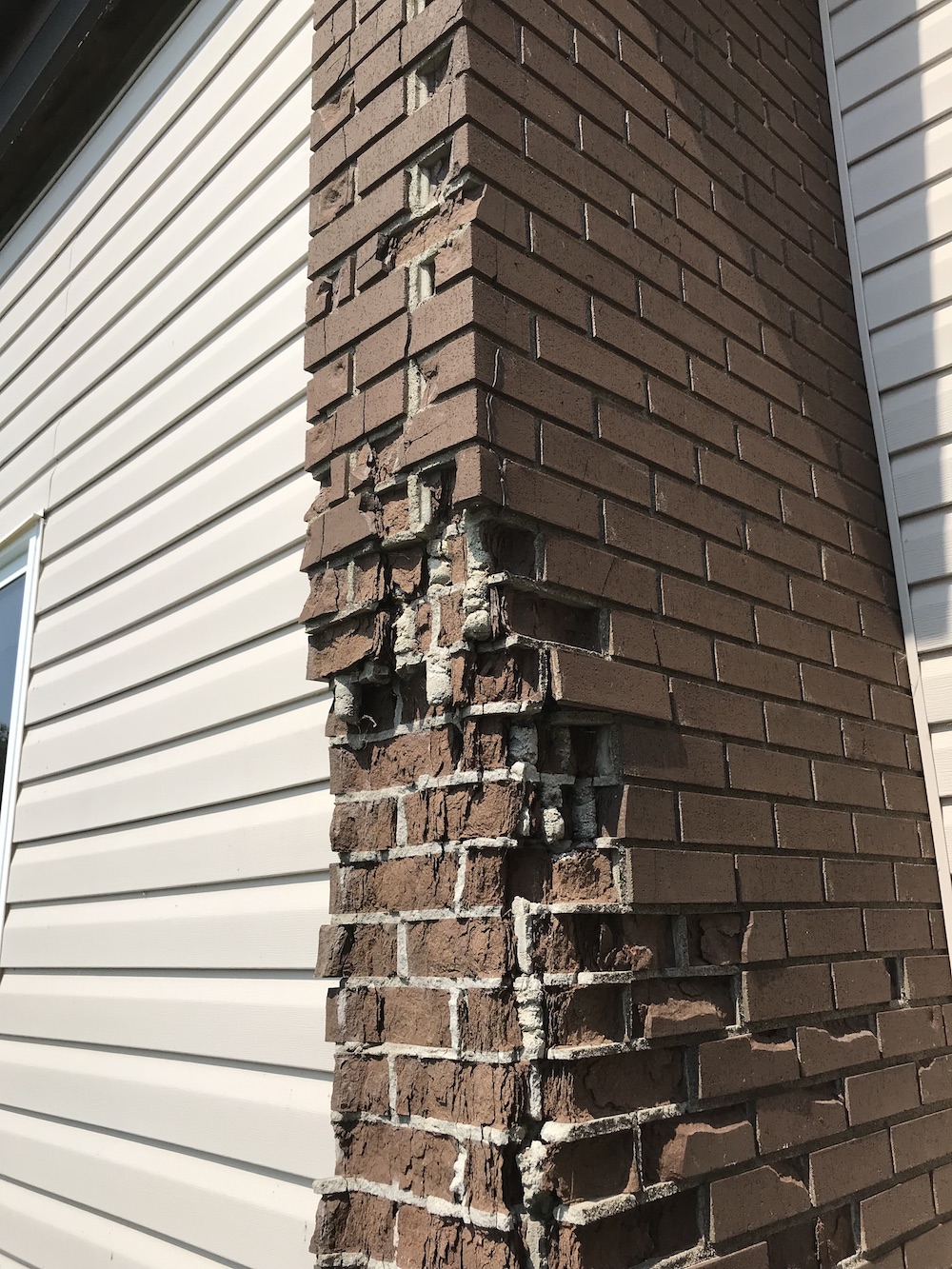
- Reading Time = 3 minutes
- Video Watch Time = 10 1/4 minutes
Answer: I’m always disappointed when I hear about young clay brick failing. Brick is expensive and should last for many, many decades. Some brick lasts for centuries, so there’s really no excuse.
When clay brick fails in a cold climate, it almost always comes down to the same thing: moisture. Since water expands when it freezes, any absorbed water held within the brick causes flaking and cracking when temperatures drop below the freezing point. This condition is called spalling.
Any design or installation conditions that promote the retention of water within the brick will cause spalling. This could involve all of the things you’ve heard from bricklayers working in your neighbourhood, including the bad brick hypothesis. “Bad brick” means the material has not been fired enough in the kiln during manufacturing to resist moisture absorption enough. And from what I’ve seen, this is the most common source of trouble. The photo below shows a particularly stark example of brick that was not fired sufficiently. Notice how some bricks are fine while others have lost lots of mass.

When you’re looking for brick to use as a replacement on your house, it’s very important to ask about water absorption and spalling. What’s the track record of the brick? How long has it been manufactured? Is there any written warranty offered on the integrity of the brick? Also, it’s vital that the brick be kept at least 6 inches above grade, with a layer of flashing between the concrete foundation below and the brick above. This prevents water splashing up from the ground, wicking up through the concrete and soaking in to the bricks. Even good brick will flake and fail if it’s too close to the ground. Even if all else is perfect, an overly thirsty brick will absorb water and flake.

The good news is that most brick is durable and continues to look great. I made the video below to explain why clay brick fails and how to guard against this. The video comes from my online course HOW TO CHOOSE BRICK AND STONE FOR YOUR HOME. It’s for people planning to build a home and looking to make the best decisions about masonry exteriors.
 I hope you found this article and video useful. Please consider helping me cover the cost of creating and publishing content like this. Click the “buy me a coffee” button below for a safe, fast and simple way to make a contribution. Thank you very much for helping to keep this website up and running.
I hope you found this article and video useful. Please consider helping me cover the cost of creating and publishing content like this. Click the “buy me a coffee” button below for a safe, fast and simple way to make a contribution. Thank you very much for helping to keep this website up and running.
– Steve Maxwell




